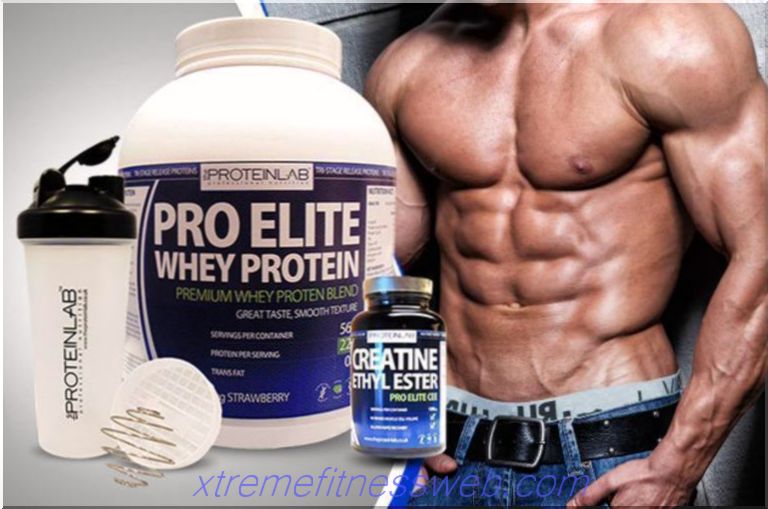- Execution technique
- Anatomy exercises - which muscles work
- Preparation for execution
- Correct execution
- Mistakes
- Recommendations for Effective Implementation
- Program Inclusion
- Contraindications
- Alternatives

Press exercises are done at the end of each workout. But not all, and not always. In bodybuilding, twisting on an incline bench is a necessary part of the plan for a novice athlete and a mid-level athlete. Those who have enough hypertrophic press usually only “pump up” it with simpler exercises. In other power disciplines, twisting on an incline bench is also used. Siloviki do it to compensate for the deflection in the spine that occurs when squats. Athletes of other directions - just to pump up the press. This popular movement has a lot of subtleties. After all, most athletes perform it not correctly, but exclusively due to the quadriceps and jerks of the body. But it’s worth learning to do the twisting correctly, and you will feel the difference.
Content
- 1 Technique
- 1.1 Options
- 2 Anatomy exercises - which muscles work
- 3 Preparation for execution
- 4 Proper execution
- 5 Mistakes
- 6 Recommendations for effective implementation
- 7 Inclusion in the program
- 8 Contraindications
- 9 Alternatives
Execution technique

Starting position
- Fix the knees on the rollers of the bench for twisting;
- Press the buttocks to the surface of the bench;
- Tighten your stomach;
- Keep your hands behind your head;
- Lean back horizontally
Traffic
- As you exhale, contract your abdominal muscles;
- Bring the lower ribs to the pelvic bones;
- Pull in your stomach even more;
- At the peak point of contraction, linger a bit and then repeat again.
Attention
- Technically, some people do a full climb rather than twisting. They lie on the bench and, due to the inertia and strength of the quadriceps, raise the body completely. This movement is not advisable to do just that, because the press will not work anymore in a similar technique;
- It is not necessary to bend the lower back inward to increase the amplitude. This overloads the back and can lead to protrusions;
- Palms on the back of the head should be avoided. With too much pressure, displacement of the cervical vertebrae is possible;
- The bench should be adjusted so that the lower legs do not “move away” much from the cushions of the simulator when lowering the body down.
Recommendations
- Twisting is done by rounding the back, and not by “bringing” the shoulders to the knees with strong flexion in the hip joint. Round the spine and lean your shoulders forward;
- Try to observe the principle of "exhale - in effort." Peak contraction at the upper point should be carried out when there is almost no air in the lungs;
- Work smoothly, eliminate jerks so that the efforts to lift the housing become more metered and the insulation works
Execution Options
- In the Roman chair . This simulator is designed to protect the back of an athlete. It is only important that he fit the athlete in height. It is necessary to ensure that the pelvis does not come off during twisting. The athlete can tilt back a little deeper than with ordinary twisting;
- Diagonal or cross twisting . In this version of the exercise, we stretch the opposite shoulder to the hip or knee. This option should work out oblique muscles more. But he does not give significant hypertrophy, so for those who want to have a thin waist, it can also be done;
- Twisting from a lying position on a bench . This option resembles a classic curl lying on the floor. Full lifting of the case is not required here. The athlete's goal is to bring the lower ribs to the pelvic bones. It is necessary to draw in the stomach, and gradually bring the ribs to the pelvis, and then - lower to the original position;
- Weight twisting . They help not only to form muscles, but also to work out the press in a power mode. A weighted press is also pumped in order to get “expressed cubes”, muscle hypertrophy.
Anatomy exercises - which muscles work

Target working muscle and auxiliary muscles:
- Rectus abdominis muscle
- Quadriceps, oblique abdominal muscles, tensor of the wide fascia, iliopsoas
The benefits of exercise:
- Suitable for beginners;
- Allows you to progress and increase the load;
- Not traumatic;
- It has many modifications and options.
disadvantages
Those who go to an inexpensive gym will have to suffer for a rather long time if their tibia is slightly larger than that of an average person. It is not convenient to train in an inclined bench and those who have large hip biceps. Such people can not always adjust a cheap small shop for themselves. More professional equipment takes into account the anthropometric features of professional athletes. The second drawback is the inability to adequately perform the movement at home. Benches for home are sold universal, but it’s just convenient for them to just download the press, and not to perform other exercises, too.
Preparation for execution

It is necessary to set the tilt of the bench by about 30 degrees, and adjust the height of the locking rollers so that the legs are comfortable, and the pelvis remained on the bench when lifting. It is necessary to work out the ascent to the bench, to develop a starting position.
If the shell sways from side to side, it is worth strengthening it by placing pancakes on both sides of the legs.
The press is usually pumped at the end of the workout, and a warm-up before it is not necessary. If a person has problems with mobility in the hip joints, he should perform circular rotation of the pelvis, abduction of the hips to the side, and leaning forward in an amount sufficient to warm up.
Correct execution

- The twisting of the spine itself begins at about two-thirds of the amplitude, at the top. Lifting is carried out due to the strength of the muscles of the press, and not due to inertia, “acceleration” of the body with your feet, or contraction of the quadriceps;
- Hands can not press on the back of the head. They should either hold their head slightly in the temple area, or be elongated along the body. It is not recommended to stretch your arms forward, as this contributes to the development of the wrong habit - stretch your chest and neck forward, and not curl up to your hips;
- The loin should be kept as flat as possible, not round it strongly;
- The head does not need to be thrown back or chin to stretch forward;
- The shoulders can be rounded forward, you do not need to rise with a flat back;
- At the top of the amplitude, the spine is approximately a right angle with the femur
Mistakes
- Throwing the case back;
- Too small angle between the thigh and spine;
- Breath holding;
- Jerks with hands forward;
- Pressure on the back of the head
Recommendations for Effective Implementation

- You can increase the load by increasing the angle of the back of the bench. Beginners can begin to perform the exercise from an almost flat bench, gradually increasing the angle;
- Additional burdens in the case of this exercise - a pancake from the bar or medball;
- Static retention at the top is allowed;
- Strengthens the load and the super-slow method, that is, twisting by 10 accounts and the same slow lowering;
- The closer the hands are to the head, the more actively the press turns on. But if you grab your hands with your hips, nothing will work
Program Inclusion
The training program is an individual thing. Many people combine several abs exercises in one workout, for example, lifting the legs in the hips or lifting the legs while lying down. Others believe that there is no particular sense in 2-3 exercises for the press. In fact, direct twisting gives the abdominal muscle a tone, and can help with cubes if a person has a small fat layer. But for those who have problems with posture, and pronounced lordosis, you need to do leg lifting.
If a person performs many slopes with a barbell and hyperextension, it makes sense to him not to twist on an inclined bench, but to raise his legs. This will help to avoid hypertonicity of the ileum, and pain.
In power disciplines, direct twisting on a bench can be combined with standing twisting, that is, an exercise similar to “prayer” but performed while standing. Siloviki should remember that 3-4 approaches with a weight with which you can perform twisting 5-6 times is quite enough. Cubes, burning and other stories about the "beautiful press" should be left to fitness models. To squat and reap a lot, you need a strong abs, and not a thin waist.
For those who want to lose weight, doing too many exercises on the press is also not recommended. 2-3 working approaches to failure at the end of a workout is a necessary minimum, and it is a maximum. If you over-train the press, it will not become embossed and beautiful faster. Some bodybuilders do 3-4 working sets of 20 repetitions, but this is already above the beginner level.
Contraindications

This exercise is not recommended for any injury to the hip joints and femoral neck. Problems with the back and lower back should also be resolved before the client opens for himself an inclined bench. Even simple discomfort in the lower back means that it is better to switch to fitball, or twisting while lying down;
Hypertensive patients should not make the bench angle too high. A significant angle of inclination contributes to a rush of blood to the head, and can lead to pressure drops;
A bench with a high lift is not recommended for those who have myopia and a tendency to retinal detachment. Such a person should not actively perform exercises in which the head is below the chest. Moreover, one should not "strain" when pumping the press. It is better to do leg raises in the hang with such a disease;
Exercise can be quite unsafe with hernias of the spine. If there is no dynamics of deterioration, the choice of exercises should be discussed with your doctor.
Alternatives
Similar in action is simple twisting on a bench lying, and exercises on the floor. Some manage to do direct twisting in the simulator for hyperextension, but this is not convenient enough.
This exercise can be replaced by twisting in the simulator to the press while sitting. If you concentrate on movement, the effect will be about the same as from simple twisting.
It is important to work out the press during training, but for its relief, it is also important to organize a balanced diet, not to overeat, and burn excess fat.







